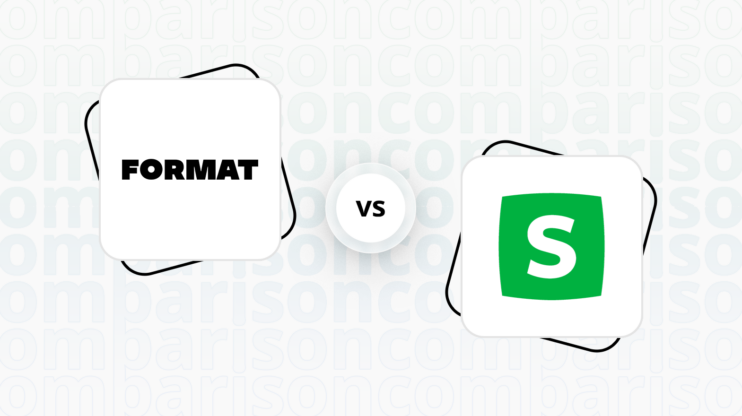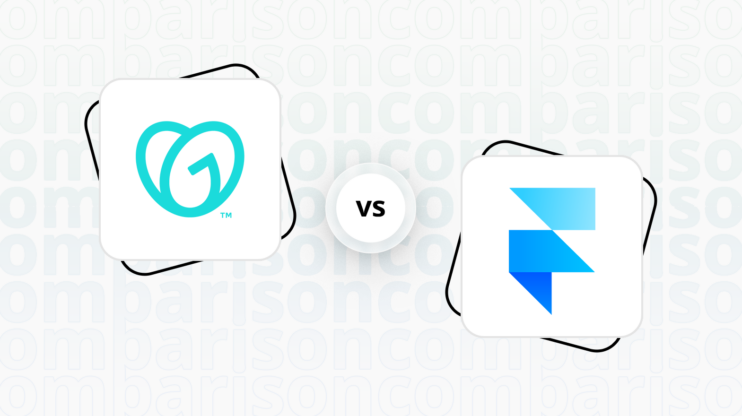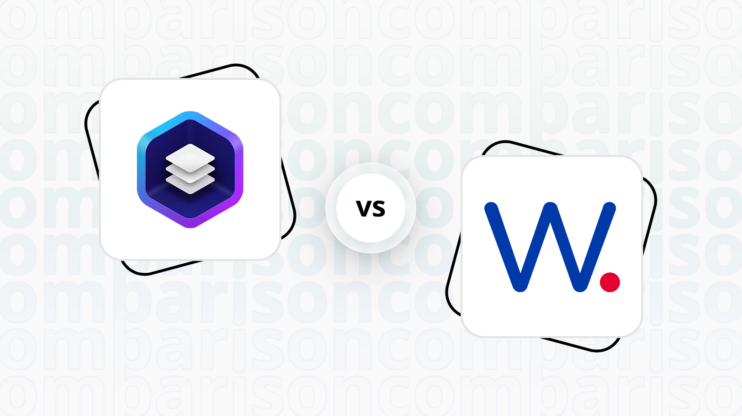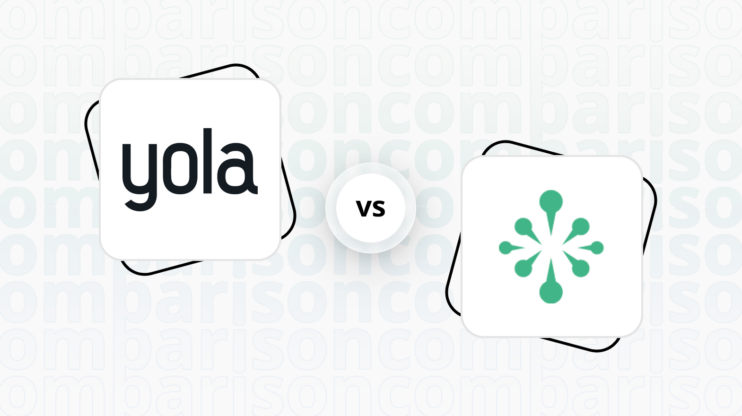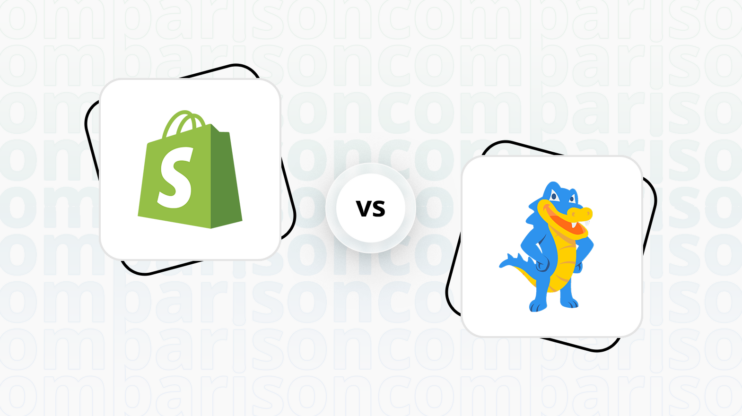Format vs Unbounce: Final verdict
Format and Unbounce both offer specialized platforms, but they cater to different needs and audiences.
-
Format (Overall Grade: 5.8/10)
is tailored for creative professionals such as photographers, artists, and designers. It excels in providing visually appealing, customizable templates and an intuitive drag-and-drop interface, making it easy for users to showcase their portfolios. While it offers basic ecommerce functionalities and strong customer support, it lacks advanced marketing features and extensive plugin integrations. Format is ideal for creatives looking to build a professional online presence without needing technical expertise. -
Unbounce (Overall Grade: 6.4/10)
is designed for creating high-converting landing pages, popups, and sticky bars. It stands out with its focus on optimizing conversion rates, offering a wide range of templates and a user-friendly drag-and-drop builder. Unbounce integrates seamlessly with numerous marketing tools and analytics platforms, making it a powerful choice for marketers aiming to capture leads and analyze performance data. However, it has been critiqued for its pricing and limited template selection. Unbounce is best suited for businesses focused on digital marketing and conversion optimization.

|

|
|
|---|---|---|
|
Design functionalities & templates |
7.0 |
7.8 |
|
Ease of use |
8.3 |
8.2 |
|
Ecommerce |
5.2 |
4.8 |
|
Website Editors |
7.5 |
7.5 |
|
Product testing options |
8.3 |
6.6 |
|
Price |
7.9 |
7.0 |
|
Hosting quality |
5.0 |
3.9 |
|
Website speed optimization |
5.0 |
5.6 |
|
Plugins and integrations |
4.9 |
6.8 |
|
Marketing features |
5.3 |
7.4 |
|
Customer support |
7.0 |
7.7 |
|
Security |
7.4 |
8.4 |
|
AI capabilities |
0.0 |
7.5 |
|
User Management |
2.8 |
7.2 |
Which one is the best for ecommerce: Format or Unbounce?
 5.2
5.2
 4.8
4.8
Verdict
: Format is better suited for creative professionals looking to sell their work online, while Unbounce excels in creating high-converting landing pages with ecommerce integrations.
-
Format
: Designed for creative professionals, Format offers basic ecommerce functionalities such as inventory management, discounts, and multiple currency options. It is ideal for artists, photographers, and designers who want to showcase and sell their work online. However, when comparing Format vs Unbounce, Format’s ecommerce capabilities are more limited in terms of advanced features and customization options. -
Unbounce
: While primarily focused on creating custom landing pages, Unbounce allows for the integration of ecommerce solutions like Shopify and Ecwid. This makes it a powerful tool for marketers looking to optimize conversion rates and drive sales through high-converting landing pages. However, it may not be the best choice for those needing comprehensive ecommerce features directly within the platform.
Which one is the best for informational and business websites?
 7.2
7.2
 5.9
5.9
Verdict
: Format is the better choice for informational business websites, especially for creative professionals, while Unbounce is more specialized for landing pages and conversion optimization.
-
Format
: Format scores 7.2 and is tailored for creative professionals like photographers, artists, and designers. It offers customizable templates, an intuitive drag-and-drop interface, and features like an integrated online store and client proofing. This makes it ideal for showcasing portfolios and managing an online presence without needing coding skills. -
Unbounce
: Unbounce, with a score of 5.9, is designed for creating high-converting landing pages, popups, and sticky bars. It provides a range of templates and a drag-and-drop interface, focusing on optimizing conversion rates. While it integrates well with marketing tools and analytics platforms, it may not be as suitable for general informational business websites compared to Format.
Format vs Unbounce: Detailed comparison
Design functionalities & templates
Design FunctionalitiesRepresents how well each platform allows for creative design and customization of websites.Score Components:
- Template Variety (30%): Range and quality of design templates.
- Customization (30%): Flexibility and options for design alterations.
- User Interface (20%): Ease and intuitiveness of the design process.
- Responsiveness (10%): Adaptability to different devices and screen sizes.
- Innovation (10%): Unique design features and tools.
 7.0
7.0
 7.8
7.8
🏆
Winner: Unbounce.
If you’re looking for a platform that offers more creative control, a wide array of design features, and a strong focus on optimizing conversion rates, Unbounce is the preferred choice.
Format is a website builder specifically designed for creatives, offering nearly 100 customizable templates tailored for various artistic disciplines. It emphasizes high-quality imagery and mobile-friendly designs, ensuring portfolios look professional on any device.
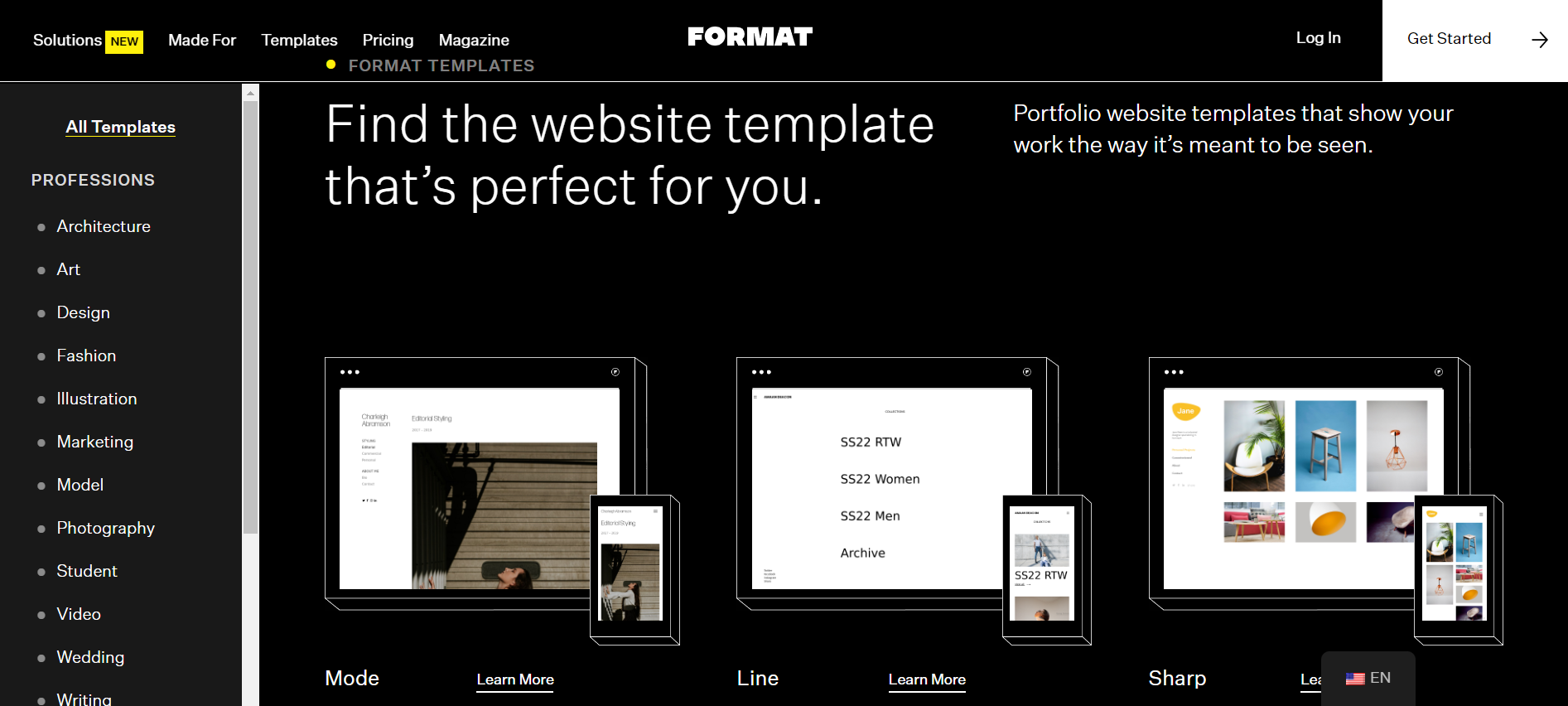
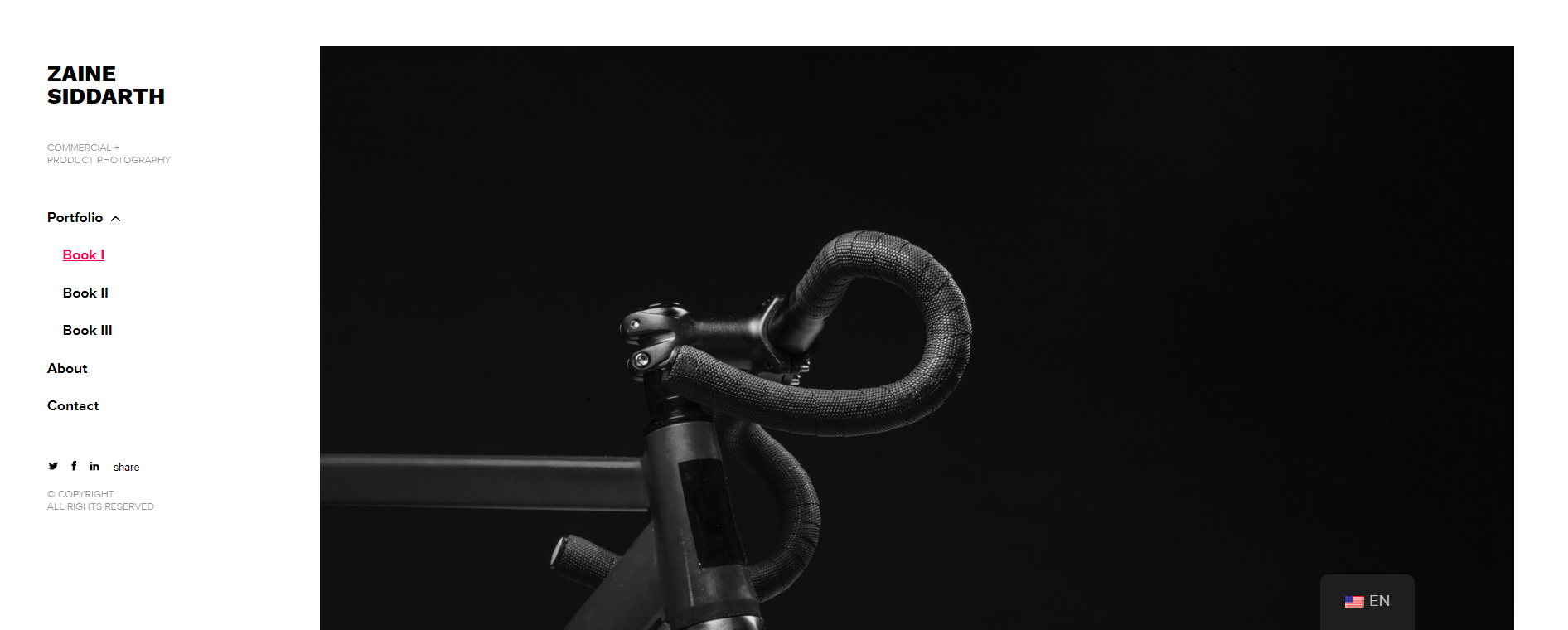
Compared to Format, Unbounce provides a gallery of over 100 high-converting templates for landing pages, popups, and sticky bars. These templates are designed with conversion in mind, incorporating knowledge and insights gained from Unbounce’s experience in optimizing landing pages. Users have the flexibility to choose from these ready-to-use templates or start with a blank canvas to create their own designs using Unbounce’s drag-and-drop builder.
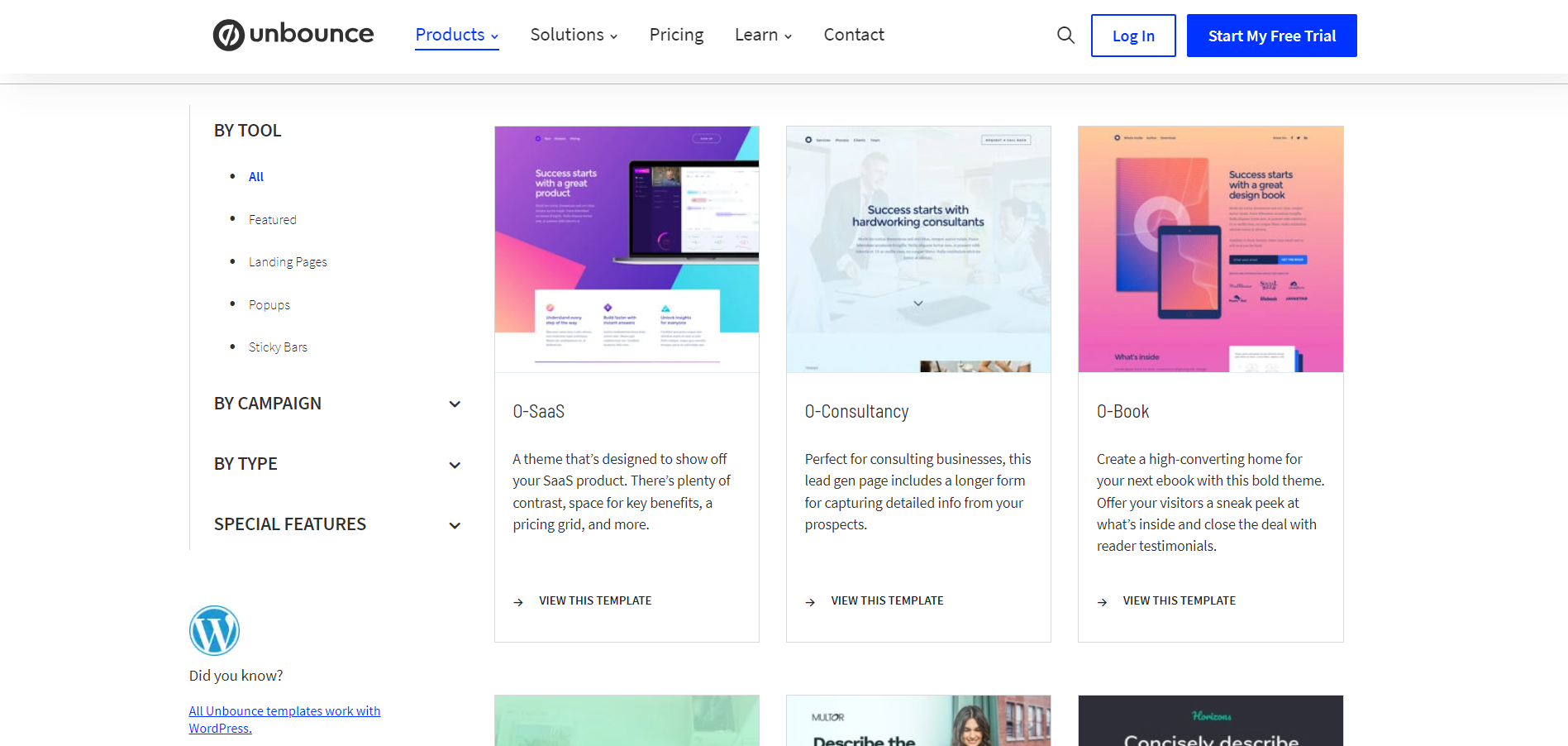
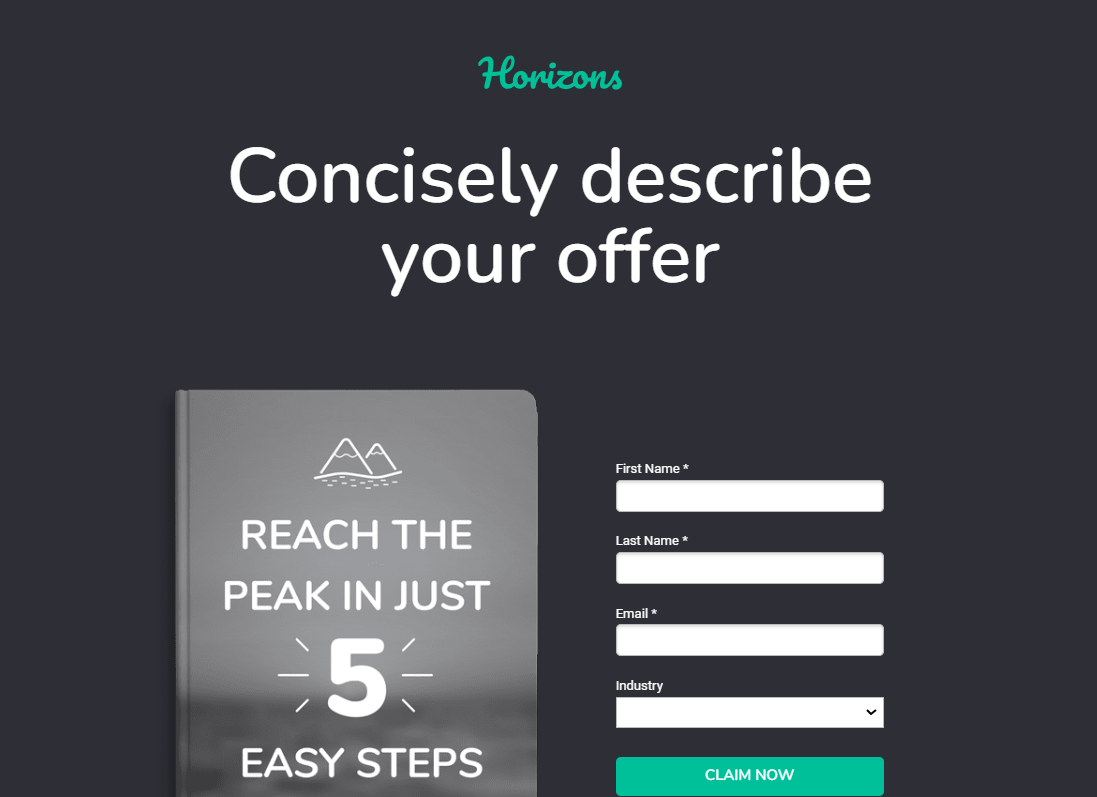
Get a head start on website creation with AI
Create a custom website tailored to your business needs 10X faster with 10Web AI Website Builder!
Ease of use
Ease of useReflects the platform’s overall user-friendliness.Score
Components:
- Learning curve (40%): Quickness and ease of getting started.
- Interface design (30%): Simplicity and intuitiveness of layout.
- User guidance (20%): Quality of tutorials and support.
- Flexibility (10%): Adaptability to various user skills.
 8.3
8.3
 8.2
8.2
🏆 Winner: Format
. Scoring a close 8.3, Format edges out Unbounce, which scored 8.2. Format’s intuitive and user-friendly platform, tailored for creatives, offers a range of professionally designed, customizable templates and essential features like portfolio pages, online stores, and blogging tools. Unbounce, while also user-friendly, has been critiqued for its pricing and limited template selection.
Learning Resources
🏆 Winner: Unbounce
. Unbounce offers a rich collection of learning resources designed to help users maximize their platform’s capabilities, including a comprehensive Help Centre, the Unprompted Podcast for marketing insights, and a Video Library for visual learning. Format, on the other hand, provides a comprehensive help center with a wide array of articles and maintains an official YouTube channel that features tutorials and updates.
For ecommerce
EcommerceMeasures the platform’s effectiveness in supporting online business activities.Score Components:
- Ecommerce themes and templates (20%): Variety and design of templates.
- Product management (25%): Ease of managing and organizing products.
- Payment options (25%): Variety and convenience of payment methods.
- Ecommerce features (20%): Features for managing an ecommerce store.
- Integration (10%): Compatibility with external e-commerce tools and services.
 5.2
5.2
 4.8
4.8
Format and Unbounce both offer ecommerce capabilities, but they cater to different needs. Format is designed for creative professionals and offers basic ecommerce functionalities for selling physical and digital products. Unbounce, on the other hand, is designed for creating custom landing pages, popups, and sticky bars, with a strong focus on optimizing conversion rates. It allows for the integration of ecommerce solutions like Shopify and Ecwid.

|

|
|
|---|---|---|
|
Ecommerce themes and templates |
4.0 |
2.0 |
|
Product page customization |
5.5 |
3.0 |
|
Payment processing and commissions |
4.5 |
6.5 |
|
POS capabilities |
0.0 |
0.0 |
|
Payment gateways |
6.5 |
7.0 |
|
Product numbers |
5.0 |
0.0 |
|
Additional ecommerce features |
3.5 |
4.5 |
Format ecommerce features:
- Inventory management and tracking
- Discounts
- Multiple currency options
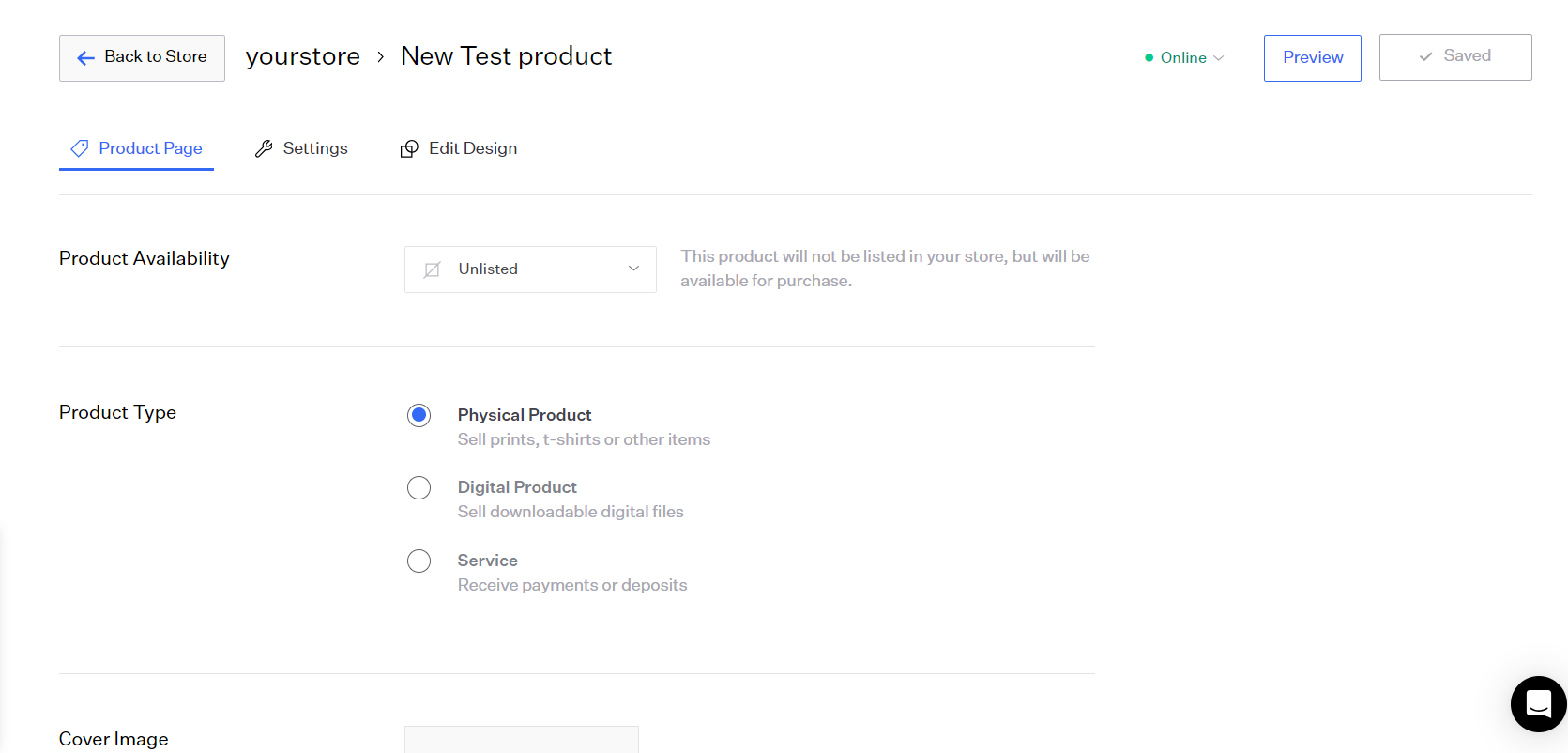
Unbounce ecommerce features:
- Shopify, Ecwid, or and other ecommerce solutions integration
Product page customization
Format offers limited specific details on product page customization directly, but its e-commerce features suggest a focus on showcasing products through high-quality imagery and detailed descriptions. You can manage product specifics like shipping, availability, and pricing, with customization likely extending to layout and presentation styles to highlight products effectively.
Unbounce, on the other hand, does have the possibility to create or customize product pages, it’s primarily focused on building landing pages, with the possibility to integrate with ecommerce platforms such as Shopify or Ecwid.
Payment processing
When it comes to payment processing, Format offers integration with major payment gateways, including Paypal and Stripe. It charges a 15% commission on the Pro plan and 5% on the Pro Plus plan. However, the platform does not have built-in POS (Point of Sale) capabilities.
Unbounce supports payment processing through an integration with Stripe, allowing users to create landing pages that can handle transactions directly, with Stripe facilitating global payments in over 135 currencies. Unbounce itself does not mention charging additional fees for transactions, implying that fees are subject to Stripe’s own pricing structure. The platform is focused on optimizing online conversions and does not offer Point of Sale (POS) capabilities, as its core features are designed for enhancing digital experiences such as landing pages and pop-ups.
Website Editors
Website EditorsEvaluates the platforms’ website building and editing capabilities.Score Components:
- Customization tools (40%): Range and power of editing features.
- Editor usability (30%): User experience within the editor.
- Design flexibility (20%): Freedom in layout and design changes.
- Update and maintenance ease (10%): Simplicity of updating and maintaining the site.
 7.5
7.5
 7.5
7.5
Winner: It’s a tie.
Both Format and Unbounce scored 7.5 for their website editors.
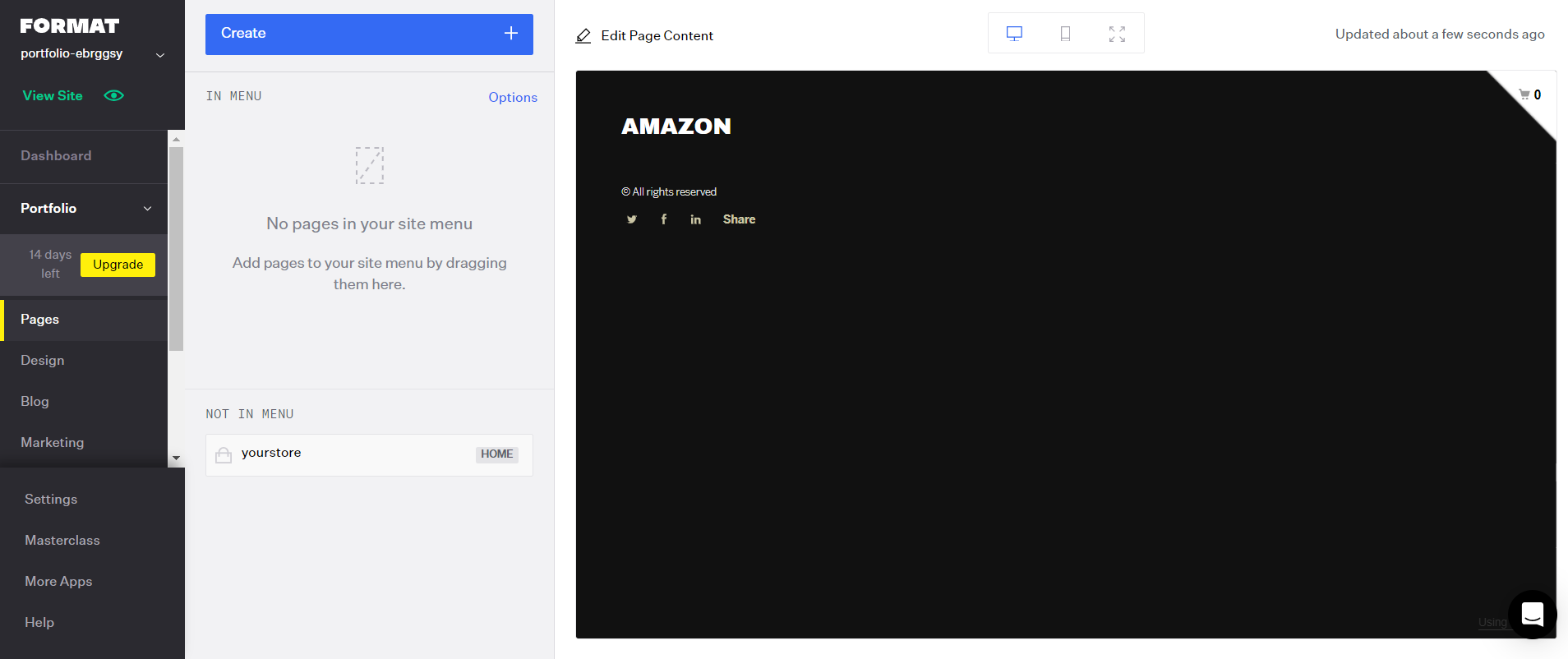
Format’s website editor is highly regarded for its user-friendliness and is especially geared towards creative professionals, making it accessible for beginners. With a quick setup process, a wide range of customizable templates, and no need for coding knowledge, users can easily create and manage their websites. Features such as drag-and-drop image import, social media integration, SEO tools, and e-commerce capabilities enhance the platform’s utility.
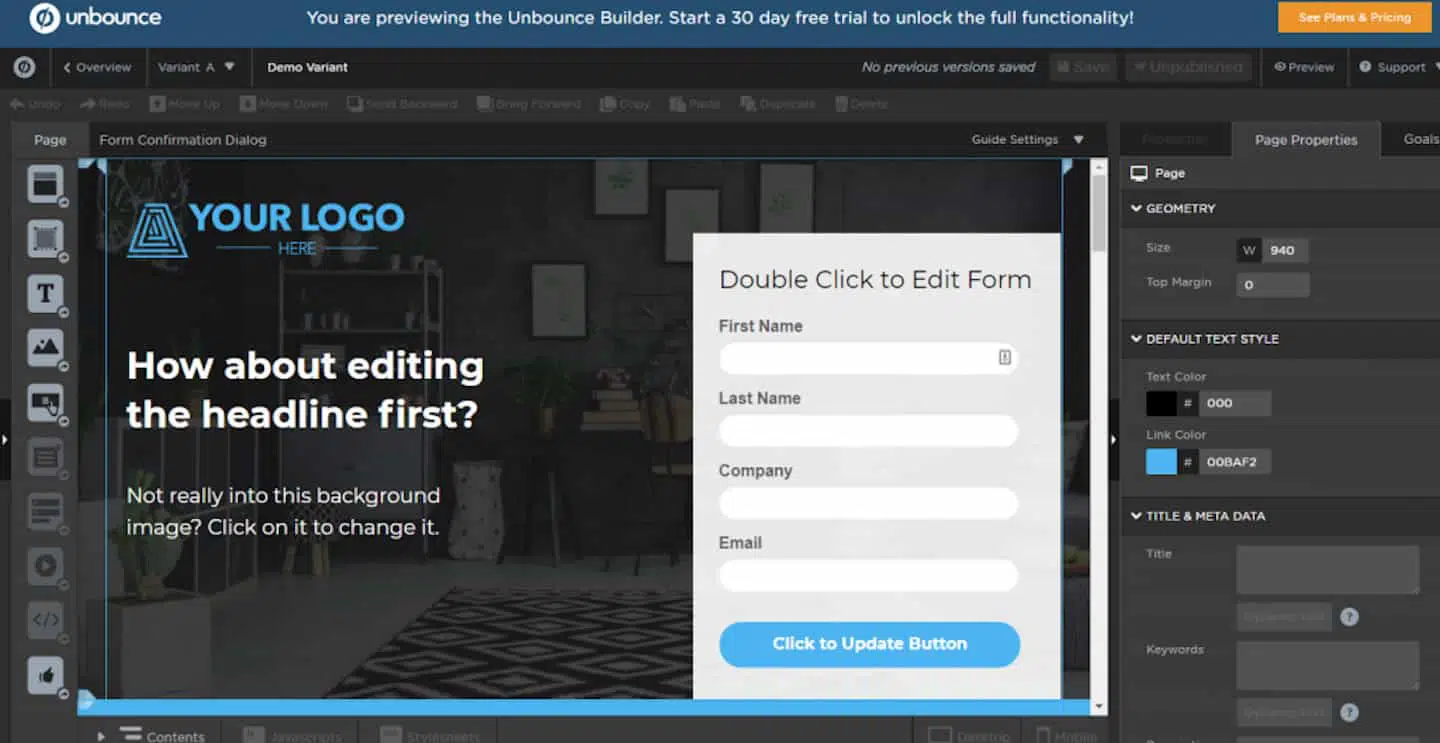
On the other hand, Unbounce’s website builder’s editor is equipped with a user-friendly drag-and-drop interface, enabling users to design and customize landing pages without the need for coding skills. It offers a variety of templates, widgets, and elements such as forms and buttons, alongside options for integrating custom HTML, CSS, and JavaScript for advanced customization. The platform supports responsive design, ensuring landing pages perform well across all devices, and includes features for A/B testing and dynamic text replacement to optimize conversion rates. Additionally, it allows for the integration of various marketing tools and platforms, enhancing the effectiveness of digital marketing campaigns.
Mobile editor/app
 4.0
4.0
 0
0
🏆
Winner: Format
. Both Format and Unbounce do not offer a dedicated mobile editor app. However, Format allows users to edit their website using a mobile browser. The interface presented is the same as the desktop version, which can be challenging to use on a smartphone. On the other hand, Unbounce does not provide any mobile editing capabilities. Despite the challenges, Format offers some level of mobile editing, making it the winner in this category.
Product testing options
Product Testing OptionsAssesses the options for trying out platform features before commitment.Score Components:
- Trial quality (40%): Extent and usefulness of the trial or free version.
- Feature accessibility (30%): How many features are available to test.
- Trial duration (20%): Length of the trial period.
- Ease of transition (10%): Smoothness of moving from trial to paid plans.
 8.3
8.3
 6.6
6.6
Overall Result
:
Format wins
. Format scores 8.3 in product testing options, while Unbounce scores 6.6. Both Format and Unbounce offer a 14-day free trial, but Format stands out with its 30-day money back guarantee and the possibility to test premium features during the trial period. Unbounce, on the other hand, requires users to enter their billing information to access the trial.

|

|
|
|---|---|---|
|
Free Plan |
No | No |
|
Trial Duration |
14 days | 14 days |
|
Testing Premium Features |
Yes, during free trial |
Yes, during free trial (billing info required) |
|
Money Back Guarantee |
30-day money back guarantee |
No |
Price
PriceLooks at the cost-effectiveness and value for money of each platform.Score Components:
- Plan value (40%): What each pricing tier offers.
- Transparency and clarity (30%): Clearness of pricing structures.
- Flexibility of plans (20%): Range of options to suit different budgets.
- Hidden costs (10%): Additional expenses not included in the plan.
 7.9
7.9
 7.0
7.0
Format offers more affordable plans, but Unbounce provides more comprehensive features for creating custom landing pages and optimizing conversion rates.

|

|
|
|---|---|---|
|
$10-$20 |
Basic ($12.00/month): Offers core services like mobile-optimized site, up to 10 web pages, and up to 70 high-resolution images. 3 client galleries, up to 2GB file transfers. No video uploads or custom code editor. Value for price: 5.0 |
No offering at this amount. |
|
$20-$30 |
Pro ($24.00/month): Includes all from Basic, plus unlimited web pages, 1500 high-resolution images,15 mins video hosting, 100GB cloud storage, a free custom domain, Online Store with up to 15 products, 50 client galleries and up to 5GB file transfers. Value for price: 7.5 |
No offering at this amount. |
|
$30-$40 |
Pro Plus ($36.00/month): Adds on Pro features with priority support, unlimited pages and high-res images, 120 mins video hosting, and 1TB cloud storage. Online Store with up to 1000 products, 250 client galleries and 10GB file transfers. Value for price: 8.5 |
No offering at this amount. |
|
$90-$100 |
No offering at this amount. |
Build ($99.00/month): Provides tools for building and launching high-converting landing pages, unlimited pages, popups, sticky bars, a form builder, free hosting, AI copywriting, custom scripts, 1,000+ integrations, support for 1 root domain with unlimited subdomains, catering up to 20,000 monthly unique visitors. Value for price: 6.5 |
|
$100-$200 |
No offering at this amount. |
Experiment ($149.00/month): Includes everything in the Build plan plus unlimited A/B tests, advanced reporting, dynamic text replacement, support for 2 root domains, and up to 30,000 monthly unique visitors. Value for price: 7.5 |
|
$200-$300 |
No offering at this amount. |
Optimize ($249.00/month): Adds to the Experiment plan with AI traffic optimization, visitor behavior insights, advanced targeting, supports 3 root domains, and caters to up to 50,000 monthly unique visitors. Value for price: 8.0 |
|
$600+ |
No offering at this amount. |
Concierge (Starting at $649/month): Offers everything in the Optimize plan plus dedicated support, implementation services, client and user management, flexible add-on plans for scaling, starting with 5 root domains and 100,000 monthly unique visitors, with options to scale. Value for price: 8.5 |
location. As a result in rare cases the prices displayed here can differ from the ones you see on their
websites.
Hosting quality
Hosting
qualityExamines the reliability and performance of the hosting solutions.Score Components:
- Uptime (40%): Consistency and reliability of website availability.
- Speed (30%): Loading times and performance.
- Bandwidth and storage (20%): Sufficiency of resources provided.
- Data centers (10%): Quality and distribution of hosting infrastructure.
 5.0
5.0
 3.9
3.9
Winner: Unbounce
. Unbounce edges out Format in this category due to its disclosed uptime of 99.96%. Both platforms offer hosting services, but neither provides detailed information about the type of hosting or data center locations. Format does not disclose any information about its uptime, while Unbounce does not offer an uptime guarantee.

|

|
|
|---|---|---|
|
Do they offer hosting? |
Yes | Yes |
|
Type of hosting: |
Not specified | Not specified |
|
Uptime: |
Not disclosed | 99.96% |
|
Uptime Guarantee: |
Not disclosed | No |
|
Data Centers: |
Not disclosed | Not disclosed |
Website Speed Optimization
Website Speed OptimizationEvaluates optimization of website loading timesScore Components:
- PageSpeed Score (30%): Google’s score indicating performance optimization.
- Loading Time (30%): The average time until a website is fully interactive.
- Mobile Optimization (15%): Optimization effectiveness for mobile devices.
- Resource Optimization (15%): Optimizing images, scripts, and other heavy resources.
- CDN Usage (10%): Use of CDN to enhance speed across geolocations.
 5.0
5.0
 5.6
5.6
🏆 Winner: Unbounce
Both Format and Unbounce have similar website speed optimization scores, but Unbounce has a slightly higher score.

|

|
|
|---|---|---|
|
Focus |
Image and video optimization |
Image optimization, Caching, Speed Booster |
|
Performance Tools |
Not specified |
Not specified |
|
Key Strategies |
Image and video optimization |
Image optimization, Caching, Speed Booster |
|
Load Times |
Varies depending on optimization and website complexity |
Varies depending on optimization and website complexity |
|
Page Speed Scores Range |
Not specified |
Not specified |
|
Core Web Vitals Improvement |
Not disclosed |
Not provided |
Format, a website builder designed for creative professionals, focuses on image and video optimization for speed optimization. However, it does not disclose any information on their Core Web Vital improvements.
Unbounce, a website builder designed for creating custom landing pages, focuses on image optimization, caching, and Speed Booster for speed optimization. Like Format, Unbounce does not provide any information on their Core Web Vital improvements. Despite this, Unbounce has a slightly higher website speed optimization score than Format.
Get a head start on website creation with AI
Create a custom website tailored to your business needs 10X faster with 10Web AI Website Builder!
Plugins and integrations
Plugins and integrationsMeasures the range and effectiveness of additional plugins and integrations.Score Components:
- Variety of options (40%): Range of available add-ons.
- Integration smoothness (30%): Ease of integrating plugins into the site.
- Quality of plugins (20%): Functionality and reliability of the options.
- Custom integration capabilities (10%): Support for custom or third-party integrations.
 4.9
4.9
 6.8
6.8
🏆 Winner: Unbounce.
Unbounce scores 6.8, offering a wide array of apps and integrations to enhance the functionality of landing pages. It allows for advanced analytics, enhanced marketing automation, direct e-commerce transactions, and personalized user engagements. Format, with a score of 4.9, offers support for a limited selection of plugins/integrations, including Adobe Lightroom, Mailchimp, and Google Analytics. However, its overall capabilities for expansion through plugins and integrations are notably limited.

Marketing Features
Design FunctionalitiesRepresents how well each platform allows for creative design and customization of websites.Score Components:
- Template Variety (30%): Range and quality of design templates.
- Customization (30%): Flexibility and options for design alterations.
- User Interface (20%): Ease and intuitiveness of the design process.
- Responsiveness (10%): Adaptability to different devices and screen sizes.
- Innovation (10%): Unique design features and tools.
 5.3
5.3
 7.4
7.4
🏆
Overall Winner: Unbounce
. Unbounce stands out for its strong focus on optimizing conversion rates and its ability to integrate with numerous marketing tools and analytics platforms. Format, while offering a range of features tailored for creative professionals, lacks in advanced marketing functionalities.

|

|
|
|---|---|---|
|
SEO Tools |
Basic SEO tools | Advanced SEO features focused on conversion optimization |
|
Email Marketing |
Limited email marketing features | Robust third-party integrations for email marketing |
|
Blogging |
Yes | No |
|
Social Media Integration |
Direct Instagram integration | Comprehensive social media integrations |
|
Analytics and Reporting |
Google Analytics integration | Detailed analytics and reporting capabilities |
|
Ads and Promotions |
Basic promotional features | Advanced features for creating ads and promotions |
Customer Support
Customer supportEvaluates the quality and availability of support options.Score Components:
- Response time (40%): Speed of support responses.
- Support quality (30%): Effectiveness and helpfulness of the support.
- Availability (20%): Range of support channels (phone, chat, email).
- Resource richness (10%): Quality of self-help and educational materials.
 7.0
7.0
 7.7
7.7
🏆 Winner: Unbounce
. In the comparison of Format vs Unbounce, Unbounce takes the lead with its comprehensive support options. Unbounce offers live chat, email, and phone support, with live chat and phone support available Monday to Friday from 6 AM to 6 PM PST. Additionally, users can access 24/7 support through their Help Centre, Community, and Chat Bot, ensuring continuous assistance.
Format, on the other hand, provides 24/7 customer support through email and live chat, with a tech support team distributed across different countries to ensure round-the-clock availability. While this is beneficial, Unbounce’s more extensive support options and dedicated enterprise-level support give it an edge in this category.
Security
SecurityLooks at the platforms’ security measures and data protection.Score Components:
- Data protection (40%): Safeguards for user and customer data.
- SSL and encryption (30%): Implementation of secure connections.
- Compliance (20%): Adherence to industry security standards.
- Regular updates (10%): Frequency of security updates and patches.
 7.4
7.4
 8.4
8.4
🏆
Winner: Unbounce
. Unbounce takes the lead in security with a score of 8.4, compared to Format’s 7.4. Unbounce’s commitment to security is evident in its PCI Level 4 Merchant status, adherence to GDPR, robust disaster recovery strategies, and regular external security audits. The platform employs a secure, multi-tenant environment with strict access controls and daily data backups to safeguard customer information.
Format, while not as robust as Unbounce, still emphasizes user data security through encrypted data storage, both in transit and at rest, and employs strict access controls. It also complies with data protection regulations like GDPR and provides resources to help secure user accounts. However, specific details about Format’s website security measures were not directly mentioned, which may be a point of concern for some users.
AI Capabilities
AI capabilitiesMeasures the effectiveness of AI-driven features and tools.Score Components:
- Automation efficiency (40%): Impact of AI on streamlining processes.
- Personalization (30%): AI-driven customization for users or customers.
- AI-Assisted design (20%): Role of AI in website design and functionality.
- Data analysis (10%): Use of AI in interpreting user data and analytics.
 0.0
0.0
 7.5
7.5

|

|
|
|---|---|---|
|
AI Builder |
|
Unbounce’s Smart Builder offers personalized templates, copy and design recommendations |
|
AI Ecommerce features |
|
|
|
AI content generation |
|
Unbounce’s Smart Copy helps generate various types of content for marketing and landing pages |
|
Additional AI features |
|
Unbounce’s Smart Traffic directs visitors to the most appropriate landing page variant, and Conversion Intelligence Insights offers practical advice and recommendations to boost conversion rates |
🏆 Winner: Unbounce
. Unbounce, with a score of 7.5, offers several AI features that make it stand out. Its Smart Builder optimizes landing page creation, while Smart Copy assists in content generation. Additionally, Smart Traffic and Conversion Intelligence Insights enhance conversion rates by intelligently directing visitors and providing practical advice and recommendations, respectively.
On the other hand, Format does not have any AI capabilities.
User Management
User ManagementAssesses the platforms’ capabilities in managing user roles, permissions, and accessibility.Score Components:
- Role Customization (40%): Flexibility in creating and defining user roles and
permissions. - Ease of Management (30%): User interface and tools for managing users.
- Access Control (20%): Effectiveness of access control measures for different user
levels. - Scalability (10%): Ability to manage a growing number of users efficiently.
 2.8
2.8
 7.2
7.2
🏆 Winner: Unbounce
. Unbounce offers more flexibility in user management compared to Format.
- Format allows only one user to manage and edit websites.
- Unbounce offers one staff account on its basic plan, with the option to expand up to 15 accounts on the premium plan. It also provides customizable permissions, enabling you to restrict or grant access based on roles such as viewer, author, and administrator.
Unbounce User Roles and Access Levels:
| Role | Description | Access Highlights |
|---|---|---|
| Viewers | Members of your team who want to view and approve pages, popups, or sticky bars before publication. | Can access pages, popups, sticky bars, stats, and leads. Cannot edit/manage pages or access account management, billing details, domains, or add users. |
| Authors | Designers or copywriters invited to edit landing pages. | Can edit, manage, publish/unpublish pages, popups, sticky bars. Have access to viewing leads and stats. Cannot access account management, billing details, domains, or add users. |
| Administrators | Manage the Unbounce account, including billing details. | Can edit, manage, publish/unpublish pages, popups, sticky bars. Can access account management, billing details, domains, and add users. Cannot delete leads or remove other Admins. |
Additional Features

|

|
|
|---|---|---|
|
SSL Certificate |
|
|
|
Custom Domain |
|
|
|
Free Custom Domain Included |
|
|
|
International Domains |
|
|
|
Mobile Responsive |
|
|
|
Page Speed |
|
|
|
Website Builder Mobile App |
|
|
|
Convert a Website To An App |
|
|
|
Website Analytics |
|
|
|
Multilingual Sites |
|
|
|
Multiple Users |
|
|
Format vs Unbounce: User Feedback
Users highly praise Format for its user-friendly website builder, particularly noting the ease of adding images and the effectiveness of customer service. Many reviewers appreciate the variety of modern templates and the platform’s suitability for users without technical expertise, especially photographers. Format’s mobile app and proofing section receive special mentions for their convenience and functionality. However, some users desire more customization options, particularly for mobile views, and mention minor limitations in template flexibility and SEO functionality. Overall, Format is celebrated for its ability to provide a professional online presence easily and efficiently, solving users’ needs for showcasing work and attracting new clients.
The reviews for Unbounce reveal a mixed sentiment among users. On the positive side, many appreciate its user-friendly, drag-and-drop page builder, which facilitates the quick creation and editing of landing pages without the need for technical expertise. Users find it beneficial for A/B testing, integrating with CRMs, and swiftly turning around marketing content. However, there are notable concerns, particularly with a case of unexpected switch to an annual plan without consent and refusal to refund, indicating potential issues with customer service and billing practices. Additionally, some users mention technical limitations, such as responsiveness issues and the absence of global elements for content updates across multiple pages, which can hinder efficiency.
The making of this blog
We followed a clear, step-by-step process to write and research this article.
Format vs Unbounce: FAQ
Which platform is better for creative professionals, Format or Unbounce?
Can I use Unbounce for ecommerce?
How do Format and Unbounce compare in terms of ease of use?
Which platform offers better customer support, Format or Unbounce?
Are there any AI capabilities in Format or Unbounce?










